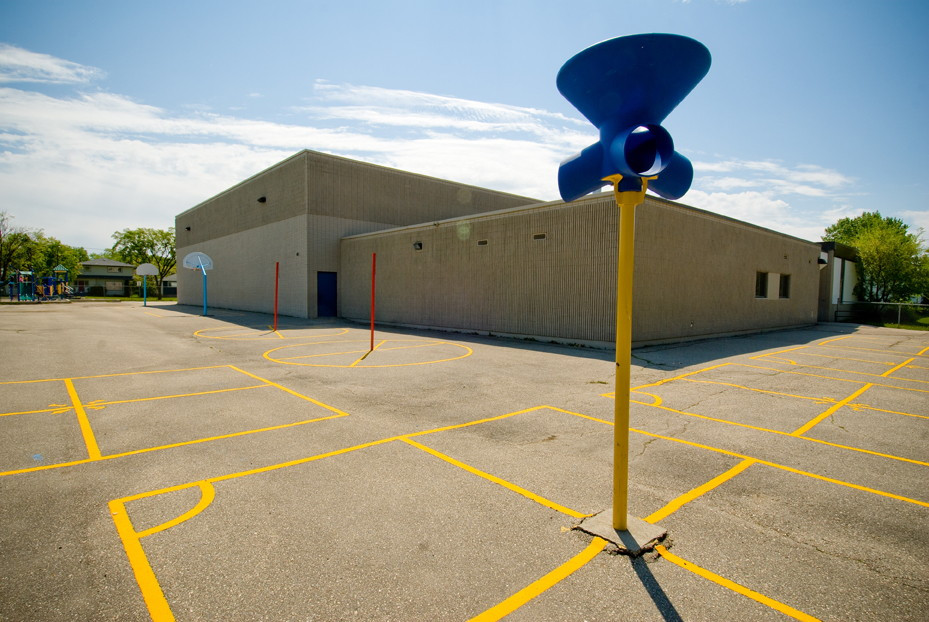Beneficial to the ‘burbs, but what about the rest of Winnipeg?
River Heights residents worry the widening of Kenaston will hurt established neighbourhoods and shut schools
The proposed plan to widen Kenaston Boulevard has some nearby residents worried about their kids’ fate, but the city has done little to address their concerns about this issue, and many others.
“Not only does expanding Kenaston encourage one-car traffic, but it would be detrimental to Carpathia School,” said Larysa, who works at Carpathia Elementary School and requested that her last name not be used. “How will the students cross safely? The school would most likely become isolated and the area would become an island. Since most students from Carpathia School have to cross Kenaston, we could see the school closing if the catchment area changes.”
City councillors are upfront about their lack of plan for the school.
“There has not been a decision as what to do about the crossing at Kenaston,” said councillor Bill Clement, representative for the Charleswood-Tuxedo area. “I suspect they might create a walkway, such as having stairs leading up to a walkway over the road. The Winnipeg School Division boundaries might even be changed for the students who live on the west side of Kenaston.”
River Heights residents have formed an unofficial group in order to discuss this and other issues. Attendees at a community meeting at the end of April spoke about their anxieties over the fate of the neighbourhood and about the lack of public consultation.
The only official meetings the city has held with residents occurred on January 28 at Carpathia School and January 29 at Canad Inns Polo Park.
The River Heights group has also discussed more environmentally friendly options, such as a transit corridor.
Outwardly, the City of Winnipeg seems to promote a vision of sustainability, as was seen at the Mayor’s Symposium on Sustainability which took place on April 25.
But River Heights residents argue that plans such as the widening of Kenaston reveal the city’s true colours.
“The plan for Kenaston would be ruining old, established neighbourhoods to support new ones,” said River Heights resident Don Duncan. “Instead, existing neighbourhoods should be given more attention to allow them to remain suitable to live in or to improve them. The Kenaston issue is creating unneeded anxiety.”
Given the size and scale of the Mayor’s Symposium, it is difficult to address all issues in depth, including the widening of Kenaston.
When asked about the contradiction between theory and action, City of Winnipeg Public Works Department transportation facilities planning engineer Neil Myska said, “There is no direct link between the proposed expansion of Kenaston and the Mayor’s Symposium.”
“However, active transportation along and adjacent to Kenaston, the improvement of transportation, and transportation and pedestrian amenities have been discussed in connection to Kenaston,” he added.
Councillor Bill Clement, who at one time was against the Kenaston expansion, said the need to ease traffic flow to suburban developments currently trumps the city’s desire to construct better public transportation issues.
“The reality is it takes decades for a proper transportation system, such as light-rail transportation, to be implemented.”
The River Heights group feels that Winnipeggers should consider how they value their own neighbourhoods and think about the negative impacts this project could eventually have on surrounding neighbourhoods.
Myska assures Winnipeggers the Kenaston plan is still in discussion and no final plans have been made. Further public consultations will take place in the fall, the city’s website states.
The River Heights residents hope their stance against what they understand to be an undemocratic procedure, referring to the minimal resident consultation, will encourage other communities to fight for the well being of their neighbourhood and the city.
Published in Volume 63, Number 28 of The Uniter (June 18, 2009)







